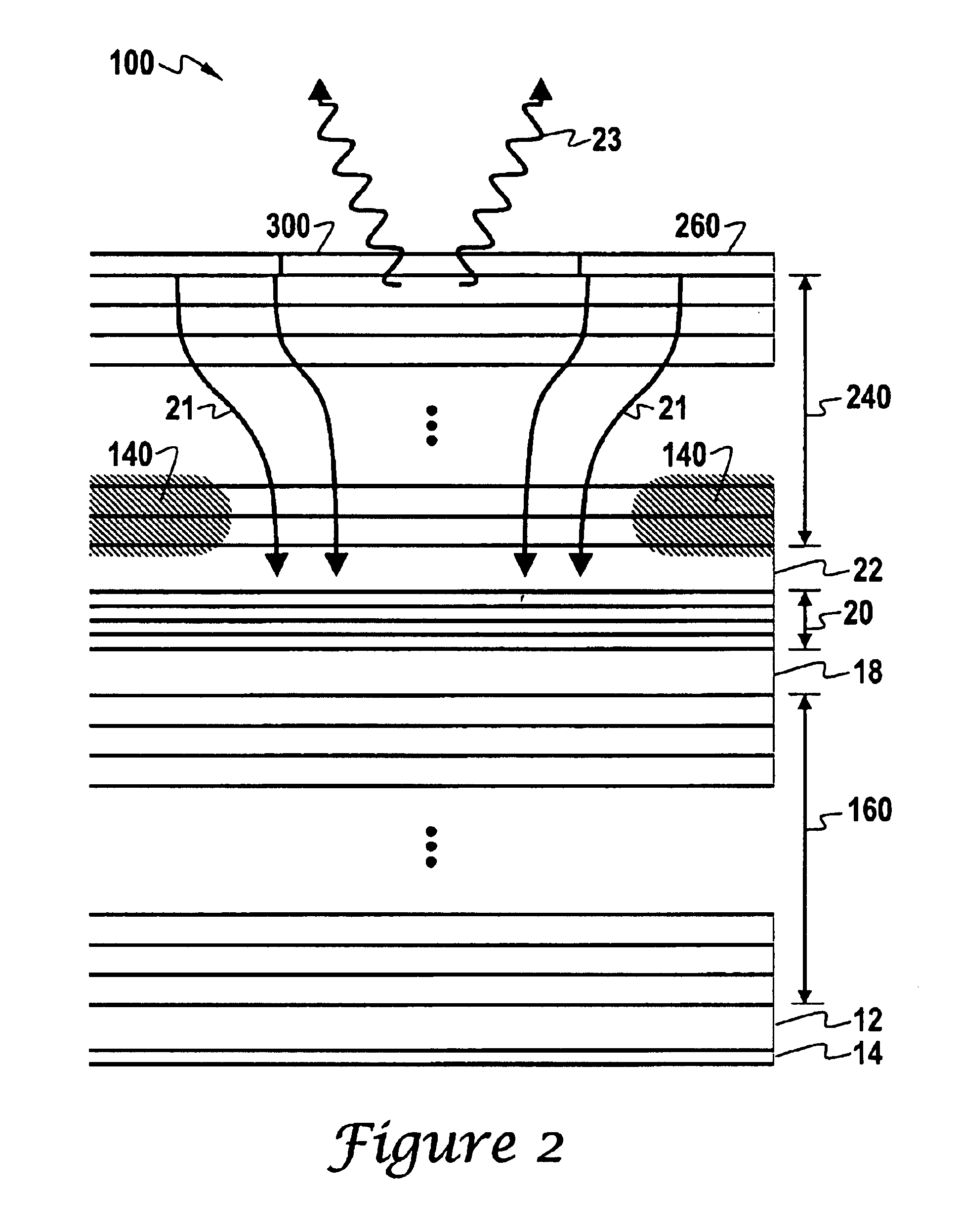Asymmetric distributed Bragg reflector for vertical cavity surface emitting lasers
- Summary
- Abstract
- Description
- Claims
- Application Information
AI Technical Summary
Benefits of technology
Problems solved by technology
Method used
Image
Examples
Embodiment Construction
Reference will now be made in detail to an embodiment of the present invention, example of which is illustrated in the accompanying drawings.
The principles of the present invention provide for asymmetrical distributed Bragg reflectors (DBRs), and for VCSELs that use asymmetrical DBRs.
Refer now to FIG. 2 for an illustration of a vertical cavity surface emitting laser (VCSEL) 100 that is in accord with the principles of the present invention. FIG. 2 should be understood as a simplified “cut-away” schematic depiction of a VCSEL that is generally configured as shown in FIG. 1. Thus, similar element numbers will be used for similar elements in FIG. 2 as were used in FIG. 1. However, the VCSEL 100 includes novel and useful top and bottom distributed Bragg reflectors (DBRs).
As shown in FIG. 2, the VCSEL 100 includes an n-doped gallium arsenide (GaAS) substrate 12 having an n-type electrical contact 14. An n-doped lower mirror stack 160 (a DBR) is on the GaAS substrate 12, and an n-type gra...
PUM
 Login to View More
Login to View More Abstract
Description
Claims
Application Information
 Login to View More
Login to View More - R&D
- Intellectual Property
- Life Sciences
- Materials
- Tech Scout
- Unparalleled Data Quality
- Higher Quality Content
- 60% Fewer Hallucinations
Browse by: Latest US Patents, China's latest patents, Technical Efficacy Thesaurus, Application Domain, Technology Topic, Popular Technical Reports.
© 2025 PatSnap. All rights reserved.Legal|Privacy policy|Modern Slavery Act Transparency Statement|Sitemap|About US| Contact US: help@patsnap.com



